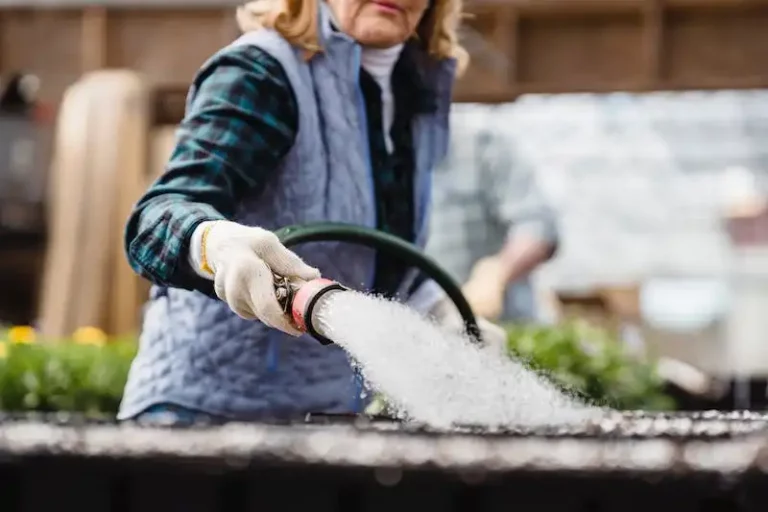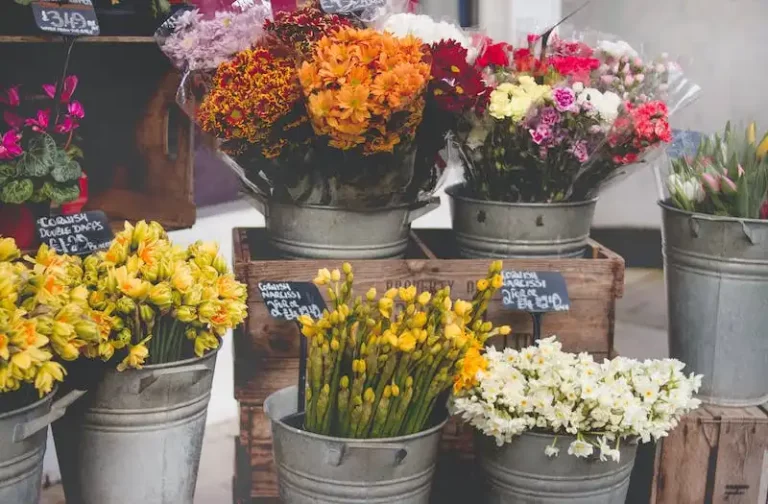Spinach is a versatile and nutritious leafy green vegetable that can be used in a variety of dishes. Whether you are a master in the kitchen or just starting out, spinach is a great vegetable to pair with other foods. It can be enjoyed raw in salads, added to soups and stews, or even cooked down and used as a topping for pizzas and pastas.
Spinach is a cool-season crop that is typically grown in the spring and fall. It prefers cool temperatures and can tolerate light frosts. If you live in a warm climate, you may need to start your spinach indoors and transplant the seedlings outside once they are ready. Spinach plants can grow up to 6 inches tall and need plenty of airflow to prevent the growth of bacteria and disease.
When it comes to growing spinach, preparation is key. Spinach seeds can be planted directly into your garden or started indoors and transplanted later. If planting outdoors, sow the seeds about half an inch deep and 2 inches apart. Spinach prefers well-drained soil that is rich in organic matter. It also benefits from a layer of compost or mulch to help retain moisture.
Harvesting spinach is a straightforward process. You can start harvesting the outer leaves when they reach about 4 inches long, leaving the crown of the plant intact. This will allow the spinach to continue to produce new leaves. If you plan to store your spinach, it is recommended to blanch the greens before freezing. To do this, simply trim the stems and blanch the spinach in boiling water for 2 minutes, then transfer to an ice bath. Place the blanched greens in a freezer-safe container and store in the freezer for up to a year.
How To Harvest Spinach Without Killing It
Spinach is a leafy green vegetable that is known for its high nutritional value. It contains oxalic acid, which provides health benefits but can make the greens taste bitter. To ensure a continuous harvest, it is important to know how and when to harvest spinach without killing the plant.
One of the first considerations is spacing. Spinach plants should be spaced about 6 inches apart to allow room for growth. They grow best in cool weather conditions and can be harvested multiple times throughout their growing cycle.
So, how do you know when to harvest spinach? The answer depends on what you plan to use it for. If you want baby spinach leaves, you can start harvesting as soon as the leaves are big enough to eat. Otherwise, wait until the leaves reach full size, around 2 to 3 inches long. If you are growing spinach for seeds, let the plant bolt (produce flowers) and collect the seeds for future planting.
When harvesting spinach, it is important to be gentle and avoid damaging the plant. Use clean, sharp scissors or shears to cut off the outer leaves, leaving the center intact. This will allow the plant to continue growing and producing more leaves. If the plant bolts, the leaves become bitter and the plant’s life cycle is coming to an end. At this point, it is best to remove the entire plant and start again.
Once harvested, spinach can be used in a variety of ways. It can be eaten raw in salads, cooked for meals, or used in processing (such as freezing or drying) to extend its shelf life. If you plan to freeze spinach, it is recommended to blanch it first by boiling it for a few minutes, then immediately transferring it to an ice bath to stop the cooking process. Once blanched, spinach can be stored in airtight containers or freezer bags for several months.
If you prefer to store spinach without freezing or drying, there are a few considerations to keep in mind. Spinach should be stored in a breathable container, such as a mesh bag or a bowl with a paper towel placed on top. This will help prevent moisture buildup and prolong the life of the spinach. It is also important to store spinach in the refrigerator and use it within a few days to ensure freshness.
Considerations for harvesting spinach without killing it include spacing, knowing when to harvest, and proper storage techniques. By following these guidelines, gardeners can enjoy a continuous supply of fresh spinach and become more self-reliant in their food production.
In conclusion, harvesting spinach without killing the plant is a common concern for gardeners. By properly spacing the plants, knowing when and how to harvest, and storing the greens correctly, you can enjoy a steady supply of fresh spinach throughout the growing season.
When Should I Harvest Spinach
One of the great things about growing your own vegetables is that you can harvest them at just the right time, ensuring the best flavor and nutrition. This holds true for spinach as well. So, when should you harvest your spinach plants? Let’s find out!
Spinach plants are usually ready for harvest around 45-60 days after planting. They can be harvested when the leaves are large enough to be used. Harvesting spinach is best done in the morning, when the leaves are still cool and crisp. You should pick the outer leaves first, allowing the center of the plant to continue growing and producing. This way, you can enjoy multiple harvests from the same plant.
It’s important to note that spinach is a cool-season vegetable and tends to bolt, or start flowering and producing seeds, when temperatures get too high. Bolted spinach leaves become bitter and are not as enjoyable to eat. To prevent bolting and prolong the harvest period, you can use a few methods.
One strategy is to plant spinach in a location that receives partial shade during the hottest part of the day. This can help keep the plants cool and delay bolting. Another method is to keep the soil consistently moist. Spinach plants prefer well-drained soils, but they also need a consistent supply of water. If the soil dries out, the plants might go into stress mode and bolt.
If you’ve planted spinach in containers, you can move them to a shady spot or even indoors during hot spells. This isolation can help protect them from high temperatures and prolong the harvest period.
When you’re ready to harvest your spinach, make sure the leaves are thoroughly dry after washing them. Wet leaves can cause them to wilt or even spoil more quickly. Once dry, you can store the leaves in a plastic bag or container in the fridge for up to a week. Spinach can also be blanched and frozen for longer storage. To blanch spinach, simply place the leaves in boiling water for a minute or two, then transfer them to a bowl of iced water to stop the cooking process. After blanching, drain the excess water and package the spinach in freezer-safe containers.
For those who prefer a continuous supply of fresh spinach, successional planting is recommended. This means planting a new batch of spinach seeds every two weeks. By doing this, you can ensure a constant harvest throughout the growing season. It’s important to note that spinach is a nitrogen-hungry plant, so it’s a good idea to amend the soil with compost or a nitrogen-rich fertilizer before planting.
In summary, knowing when to harvest your spinach can help you experience the joy of self-reliance and enjoy the freshest, most nutritious greens. Harvest the outer leaves first, ensure the plants don’t bolt by providing shade and consistent moisture, and consider storing or freezing your spinach for later use. By following this guide, you’ll become a master of spinach harvest!
How To Harvest Spinach
Harvesting spinach is an exciting step in your gardening journey. Here’s a guide on how to harvest spinach and make the most of this nutritious vegetable.
When should you harvest spinach? Spinach leaves can be harvested as soon as they reach a usable size. The size of the leaves depends on your personal preference. Some gardeners prefer to harvest young baby leaves for a milder taste, while others wait until the leaves mature for a stronger flavor.
To harvest spinach, you can simply pick the outer leaves as needed. This method is called “cut and come again” because it allows the plant to continue growing new leaves. Make sure to leave at least 1-2 inches of growth at the base of each leaf to ensure the plant’s regrowth.
If you want to harvest the entire plant, you can cut it at the base when the leaves are of desired size. Don’t worry if you accidentally cut too much – spinach is a quick grower, and you’ll have more leaves soon.
After harvesting, it’s important to wash the spinach thoroughly to remove any dirt or insects. Once clean, spinach can be stored in the refrigerator for up to a week. To make it last even longer, blanch the spinach by briefly boiling it and then immediately placing it in ice water to stop the cooking process. Frozen spinach can be stored for several months and is a great addition to your meals.
What if you have too much spinach to consume? You can blanch and freeze it for later use. Another option is to share it with friends or neighbors who might appreciate the fresh greens. Spinach pairs well with other vegetables like kale or chard, so combining them can create a delicious and nutritious mix.
It’s also worth mentioning that spinach is cold-hardy and can withstand freezing temperatures. In fact, spinach tastes better when grown in colder weather, as the cold temperatures enhance its flavor. So, if you live in a colder climate, spinach is a great vegetable to plant.
To ensure healthy spinach plants, proper spacing is crucial. Give each plant enough room to grow, usually about 6-8 inches apart. This allows for proper airflow and prevents overcrowding, which can lead to fungal diseases.
When it comes to nitrogen, spinach loves it. Applying nitrogen-rich fertilizer to your spinach plants will ensure healthy and vibrant leaves.
To conclude, harvesting spinach is a rewarding experience. Knowing when and how to harvest spinach will result in a continuous supply of this tasty and nutritious vegetable. Whether you prefer the young baby leaves or the mature ones, spinach is a versatile plant that can be enjoyed in a variety of dishes.



